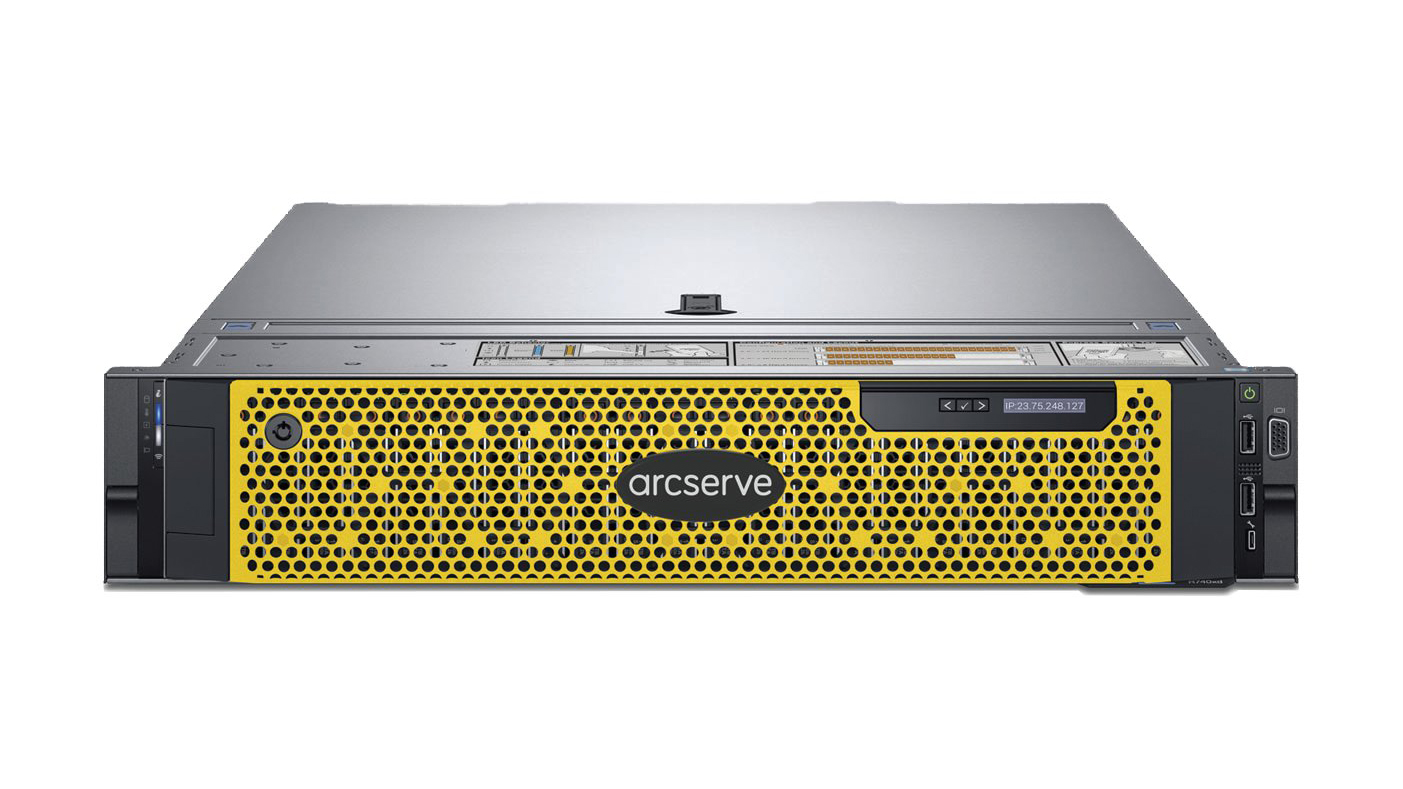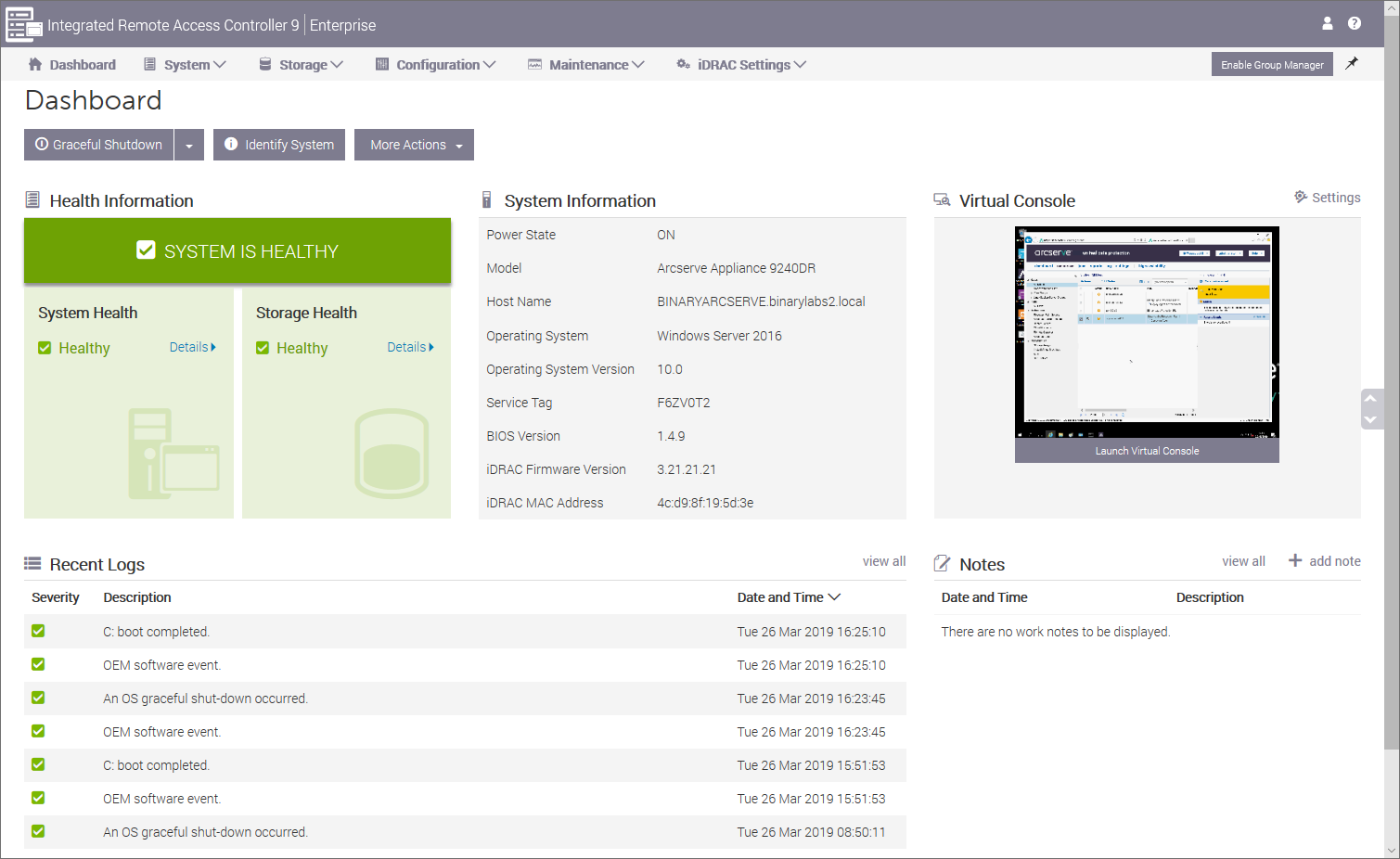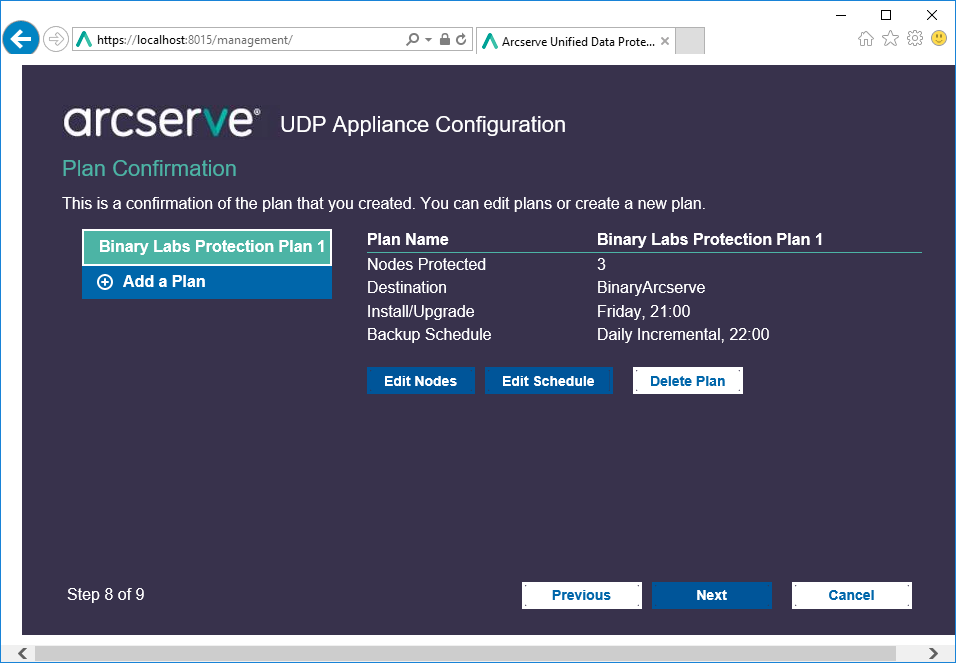Arcserve UDP 9240DR review: Beef up your backups
A data protection host that has it all


An enterprise-class backup appliance that’s easy to deploy and has excellent disaster recovery credentials, all delivered in a powerful and expandable hardware platform
-
+
Fast deployment; Big storage capacity; Classy Dell EMC hardware; Top platform support; Great disaster recovery features
-
-
Separate Exchange GRT utility; Documentation could be better organised

Arcserve has taken data protection to the next level. Its 9000 series of UDP (unified data protection) appliances aims to provide everything an enterprise could possibly need. Along with support for physical and virtual environments plus a wealth of business apps, they include deduplication, replication and high availability as standard features.
In this exclusive review, we look at the UDP 9240DR 2U rack appliance which shows off a vastly improved hardware platform. Whereas the older UDP 8000 series used cheap and cheerful Supermicro servers, the 9240DR gets the Dell EMC treatment; hiding behind its Arcserve bezel is a classy PowerEdge R740xd.
With this much power and capacity on tap, the 9240DR can provide a one-stop shop for onsite and offsite backup, plus on-premises, remote site and cloud disaster recovery. Key recovery features include its ability to spin up instant VMs of protected physical and virtual systems on the appliance or in the cloud.
Arcserve UDP 9240DR review: Hardware features
The 9240DR is exceedingly well-specified, as it sports dual 2.2GHz 10-core Intel Xeon Silver 4114 CPUs and 192GB of DDR4 field-upgradeable to 576GB. It makes full use of the PowerEdge's storage credentials too, including twelve 8TB Exos SAS3 LFF hard disks and dual 1.92TB SATA SSDs.
The LFF drives handle the UDP data store and are delivered as a RAID6 array managed by a Dell PERC H730P Mini controller. Located at the rear, the SSDs are mirrored and provide a fast repository for the UDP deduplication hash tables.

There's room to add more drives for capacity expansion and the appliance has a dual-port SAS3 PCI-E HBA for external disk shelves. The price includes an Enterprise license for the Dell iDRAC9 controller, so you're getting top-notch remote management features as well.
Arcserve UDP 9240DR review: Deployment
The appliance is preloaded with Windows Server 2016 Standard, along with Arcserve UDP, and a key feature is its recovery point server (RPS). This defines data stores on the appliance where data is backed up to and provides all deduplication and replication services.
Sign up today and you will receive a free copy of our Future Focus 2025 report - the leading guidance on AI, cybersecurity and other IT challenges as per 700+ senior executives
Arcserve claims a swift 15-minute initial deployment which we found quite achievable. We attached a local monitor, mouse and keyboard, and followed the quick start wizard to join the appliance to our Active Directory domain, add member nodes and create our first protection plan.
All declared nodes then have the UDP agent pushed to them which took a further 8 minutes for each one. We also added more nodes by browsing the lab's Hyper-V and VMware ESXi hosts from the UDP console.
Arcserve UDP 9240DR review: Protection plans
Protection plans bring everything together nicely; they define schedules for full and incremental backups of member nodes which can be run as often as every 15 minutes. Plans are available for agent-based backups of Windows and Linux systems, host-based agentless backups, securing UNC or NFS shares plus Office365 Exchange and SharePoint services.
You define the number of daily recovery points required, add more nodes whenever you please and choose either an RPS or local and shared disk folders as destinations. Plans are extremely versatile as you can add tasks to them with options including replication to a remote RPS or Arcserve Cloud account, running an assured recovery test, copy or archiving files and migrating data to a locally attached tape drive via the free Arcserve Backup software.

Tasks can copy or archive data and recovery points to a range of popular cloud providers. It was a shame Arcserve declined to provide a trial account of its Cloud service but no matter, as we used our Amazon S3 account instead which worked just fine.
For critical systems, you can add a virtual standby task which uses recovery points to create VMs of selected nodes on VMware, Hyper-V, Amazon EC2 or Microsoft Azure. The task updates the VM with each backup and a heartbeat counter fires the standby VM up automatically if the primary node goes offline.
We tested this with an extra task on our SQL Server 2014 protection plan to create a standby VM on our Hyper-V host. When the next backup ran, it created a new VM in around 15 minutes and when we powered the primary host down, up it came after the requisite number of seconds has passed.
Arcserve UDP 9240DR review: Recovery features
File and folder recovery is a cinch as we loaded the agent console for the selected node, chose a recovery point, picked files and folders and restored them back to the node or another location. We had no problems restoring selected SQL databases back to our host and you can make data stores available as network shares.
UDP's Exchange GRT (granular recovery technology) hasn't changed over the past few years and still requires a separate utility which was installed on our Exchange 2013 host along with the agent. The desired recovery point is mounted as a new drive on the host via the agent and once we'd pointed the GRT utility at the relevant EDB file, we could select items such users, mailboxes, emails and contacts and restore them back to our live Exchange server.

UDP's Instant VM feature can get you out of a fix as it creates on-demand VMs from node recovery points. Using our SQL Server 2014 node again, we selected the Instant VM option, chose a recovery point, used the appliance's own Hyper-V services and had a new VM up and running in 220 seconds.
Arcserve UDP 9240DR review: Verdict
The raft of online documentation is a struggle to wade through but we can confirm that the UDP 9240DR is as easy to deploy as ArcServe claims and it offers an impressive range of features all wrapped up in a powerful and expandable hardware package. Enterprises that want one solution for their entire data protection strategy along with great disaster recovery services will find the UDP 9240DR a top choice.
Verdict
An enterprise-class backup appliance that’s easy to deploy and has excellent disaster recovery credentials, all delivered in a powerful and expandable hardware platform
Chassis: 2U rack
CPU: 2 x 2.2GHz Intel Xeon Silver 4114
Memory: 192GB ECC DDR4 2,400MHz (max 576GB)
Storage bays: 12 x LFF front hot-swap; 4 x mid-plane LFF; 2 x SFF rear hot-swap
RAID: Dell PERC H730P Mini SAS3 with 2GB NVRAM cache and BBU
Storage included: 12 x 8TB Dell Exos LFF SAS3 (data), 2 x 1.92TB SATA SSD (hash)
Array support: RAID0, 1, 10, 5, 6, 50, 60
Network: 4 x Gigabit,
Expansion: Dual-port SAS3 PCI-e HBA
Power: 2 x 750W Platinum hot-swap PSUs
Management: Dell iDRAC9 Enterprise
Warranty: Gold Maintenance, £10,073 exc VAT per year
Dave is an IT consultant and freelance journalist specialising in hands-on reviews of computer networking products covering all market sectors from small businesses to enterprises. Founder of Binary Testing Ltd – the UK’s premier independent network testing laboratory - Dave has over 45 years of experience in the IT industry.
Dave has produced many thousands of in-depth business networking product reviews from his lab which have been reproduced globally. Writing for ITPro and its sister title, PC Pro, he covers all areas of business IT infrastructure, including servers, storage, network security, data protection, cloud, infrastructure and services.
-
 Trump's AI executive order could leave US in a 'regulatory vacuum'
Trump's AI executive order could leave US in a 'regulatory vacuum'News Citing a "patchwork of 50 different regulatory regimes" and "ideological bias", President Trump wants rules to be set at a federal level
By Emma Woollacott Published
-
 Microsoft Excel is still alive and kicking at 40 – and it's surging in popularity as 82% of finance professionals report ‘emotional attachment’ to the spreadsheet software
Microsoft Excel is still alive and kicking at 40 – and it's surging in popularity as 82% of finance professionals report ‘emotional attachment’ to the spreadsheet softwareNews A recent survey found Gen Z and Millennial finance professionals have a strong “emotional attachment” to Microsoft Excel
By Emma Woollacott Published
-
 LastPass hit with ICO fine after 2022 data breach exposed 1.6 million users – here’s how the incident unfolded
LastPass hit with ICO fine after 2022 data breach exposed 1.6 million users – here’s how the incident unfoldedNews The impact of the LastPass breach was felt by customers as late as December 2024
By Emma Woollacott Published
